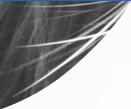HELP NOT HINDER – Part 5 – Forwards!
“We need to remember that every elite rider was once a beginner rider without skills…” Such a small sentence, such an important message….so who noticed this sentence in last weeks blog? As I slowly take very small steps forwards toward my own personal goals I find this sentence heartening and powerful. Each of us should probably paste it on to the bathroom mirror to read on a daily basis.
I have to confess that I was reminded of this thought when watching Harry Potter and the Order of the Phoenix! In preparation to defend themselves against Voldemort, Harry introduced his Defence Against the Dark Arts training programme to his fellow students….”Just remember,” said Harry “that every great wizard was once just like you ..an ordinary student.” As we often attribute the magical to great riders this is especially appropriate to these blogs on aids. Of course behind the magic is inevitably years of preparation and superb application of basic skills. Wizardry takes work!…and simple steps.
SO WHERE DO YOU PUT YOUR LOWER LEG
However there is one little quirk of equine physiology that is magic to those horses who need more help to go forwards. It concerns where to use the leg. Riders 50 to 70 years ago tended to have their heels further forward than is recommended today (and dressage saddles were not as straight cut) and to this day most natural young horse riders also put their lower legs further forward than normal. There is more to this than just ‘sitting behind’ the horse for security reasons. Here’s how to feel and see why this was done in the past and is still done with young horse specialists:
To feel what it is, experiment with the position of the leg when you next ride and use the leg further forward, even in front of the girth, and note what reaction you get. You will find that most horses are naturally more responsive to a forward leg aid if the leg is used more forward on the horse’s side. To see what is happening stand by your horse with someone else holding them. Then take your finger or a stick and carefully prod them gently around the area where the girth goes, both in front and behind the girth. I do not want anyone kicked so please be sensible and introduce this gently and carefully…all the while being aware of your horses’ reactions and level of comfort/discomfort.
THE MAGIC SPOT
You will find that around the rib cage a foot behind the girth, where the leg is often used, that the horse is relatively insensitive. However in certain areas near to the girth and even in front of the girth there will be a reflex action that will go back to the horse’s hip, and probably mean they begin to pick up the hind leg on this side. It is this natural reaction to the use of the leg in this area…the magic spot...that can be of great value to send your horse forwards initially or in times of difficulty.
PROGRESSION, PROGRESSION, PROGRESSION
Of course this type of technique will never by itself substitute for a progressive training of a horse, so they understand what is required and there is real communication going on between rider and horse. I usually start this communication process off on the lunge, when it becomes quickly obvious to the horse what is required and easy for me to use a language…body language and in particular voice aids …that my horse understands. Then when the same horse is ridden it is easy to use the same voice aids as the rider simultaneously uses normal leg and rein aids…. and so the process of communication and learning using small aids or helps is begun.
THESE ARE NOT AIDS
Pulling on the rein until the horse stops or pressing with the leg until the horse goes forward are not aids in the normal sense, and if used constantly go down the road of physical manipulation rather than communication. I have always been bemused by the instructions of jumping coaches for riders to ‘put the leg on’ as they approach a fence. Should the leg not already be in contact? Of course what these coaches want is for you to squeeze as though the horse was a tube of toothpaste. This is not precise communication and is both inefficient and ineffective.
We should give aids within the leg or rein contact… a little nudge with the leg or a tweak with the fingers… as we go with the movement offered by our horse. At times we may have to repeat the aid and then repeat the aid again more strongly if there is still an insufficient response….of course all the while asking ourselves whether what we are asking is easily understood, fair and reasonable. When we get the desired response we must immediately reward and go back to using a very small aid next time. Each aid should be looked at as important. If there is a poor response to an individual aid, rather than just going on to the next aid that aid should be followed through to a satisfactory conclusion. In this way the horse also realises that this conversation is important.
ASSERTIVE BUT GRADUALLY MORE REFINED
So do not be afraid to be assertive and firm doing the simple things in an appropriate safe environment. This may mean using your heels to kick with at times. Do not be afraid of being positive and proactive, even if you then discover you have asked a tiny bit too much and have to make subsequent adjustments. As they say ‘our odds go up when you file an application’ so get involved and avoid being passive. This is not a contradiction from what I have said before. I have explained at some length about the need to be humane and allowing, and this is vital, but hand in hand with this it is also vital to be clear and assertive about your communication….as long as your aim is to refine your conversation. Good clear, refined, communication, which has to be a two way process, means avoiding becoming mechanical or forcing something except in emergencies. This will be helpful to your horse and can produce extraordinary results.
Regarding refining your aids the following is something I have said before but it is probably worth repeating: When you are working your horse next time give the strength of your aids a mark out of 10 as you do the simple early exercises. Then as you do your more advanced exercises re-evaluate the strength of your aids. If you regularly use stronger aids for the more advanced exercises you may be creating difficulties for yourself along the road.
WHERE TO GIVE THE AIDS
If you have long legs like me and are in a dressage saddle the leg contact is under the upper part of my calf and it is through this contact that I give my leg aid. As I ride shorter for jumping my leg rises a little and I give my aid using a slightly lower part of my leg, which means my horses feel the leg aid in the same place whatever length I am riding. It is only if I have a difficulty getting a response that I will use the heel of my foot further forwards or use the leg and stick or leg and spur together.
In other words it doesn’t matter whether I am in a dressage or jumping saddle as my stirrup leather still stays parallel to the girth. The girth of all saddles should fit in the same place so this means that the normal position of the lower leg will remain in pretty much the same vertical line. Now here’s the key point that is so important to simple and effective riding. The leg in the normal position, left leg, right leg, or both legs together, should mean go forwards and nothing else. If I want to control or move the quarters I bring the leg further back, but I don’t use this position of the leg to mean go forwards. Apply this principle and the clarity of communication and results will speak for themselves.
REASONS FOR NOT GOING FORWARDS
Initially, especially with a confused or deadened horse you may need to work on the lunge and use any unusual aid or sound (including the pppst in the right ear) to begin the process of training your horse to respond to a small aid given in the normal place, which also happens to be an easy place for you. Generally speaking if your horse does not respond well to your forward aids it is possible they do not understand, which is obviously common with an untrained horse, but otherwise there are five typical reasons:
1 – They are in pain or discomfort (check this out first with your vet).
2 – They have become disheartened by a non-allowing hand (see last week’s blog).
3 - They have become deadened and confused by a rider kicking and pulling at the same time (see next week’s blog).
4 - They are not coming through the back or going with ease (as with humans, when horses feel good physically it is also a big mental boost that encourages a forward attitude).
5 –They need a more appropriate exercise…possibly easier and more logical, or different and more fun. (bad dressage in small arenas has a great deal to answer for).
Regarding no 5….there is huge value in getting out in the countryside for horse and rider. Riding outside is a great catalyst to using aids in an instinctive and assertive way and a great encouragement for your horse to think forwards….. which once achieved is such a joy. Happy Days. William
PS – REIN AIDS Regarding last weeks blog I had a number of responses talking about lightening the hand to go forward and increasing the weight in the hand to slow down. However these are not aids as I know them…certainly not precise aids….and I would not do this unless I had a horse that was ignoring normal aids. If anything as you go slower in collection the rein contact should be lighter, and if you always give away the rein to do a medium or extended pace your horse will tend to sprawl and become disconnected. Instead in both cases you should aim to maintain the normal leg and rein contacts and give the aids within these contacts.
STILL TO COME… Weight aids; kicking and pulling and the chicken shed balance; …… and yes, the all important emergency stop!
[ back to Articles ]
|


